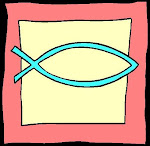
When considering the type of fly box that you wish to purchase, take time to think about all the other items you'll be carrying out on the water and what you're going to put them in.
I like using a vest. I started with one when I first took up fly fishing 37 years ago and have stuck with it. But the deciding factor for me in using a vest is more a product of where I fish and how I fish, not one of style. The majority of my fishing tends to involve hiking along rivers and streams in the Mammoth area. Rarely do I fish lakes, and when I do, they are high country lakes to which I have to hike a long distance. For that reason, a vest is extremely useful to carry not only fly boxes but a bottle of water, lunch, bug spray, survival knife, fire starting tools, and anything else that I might need to assist me on those long treks miles from the car. So, as one more necessary piece of equipment to shove in a vest pocket, consider the size, shape, and use of the fly box that you'll need.
I have multiple fly boxes, each loaded with different types of flies; boxes filled with terrestrials, boxes with nymphs, poppers, dries, etc. Of course, I don't take every box with me on every jouney. If you plan ahead, your can pare down your box of ammo to just the types of flies you'll need for the destination. On the last trip, I took with me one fly box supplied with only blue winged olives, elk hair caddis, bead head prince nymphs, and some larger stimulators. That's all I need to inflict a great deal of damage!
I like the cheap, green plastic foam-filled boxes. They float, seem indestructable, and have foam ridges on which to clip the flies. Some people like compartments; some like flies loose in one non-partitioned container. Try out some different styles. I have found that the compartments and the loose style do not work for me, as I have had flies blow out of a box in a strong wind once the compartment is opened. There is an argument that with a compartment box, you only open the compartment that you need. I get that too. The point is, experiment; try several different methods, and you'll discover what's best for you.
 There is a remote place amid the peaks of the high country where the air is crisp and clean, and the smell of pine is truly intoxicating. Where lakes appear as smooth as glass, like giant mirrors, reflecting cotton ball clouds gliding across their surface. A place where time stands still and the wind moves the tall grass to and fro in gentle waves. Only in this high country can be found fish so colorful that they resemble drops of liquid gold.....
There is a remote place amid the peaks of the high country where the air is crisp and clean, and the smell of pine is truly intoxicating. Where lakes appear as smooth as glass, like giant mirrors, reflecting cotton ball clouds gliding across their surface. A place where time stands still and the wind moves the tall grass to and fro in gentle waves. Only in this high country can be found fish so colorful that they resemble drops of liquid gold.....










